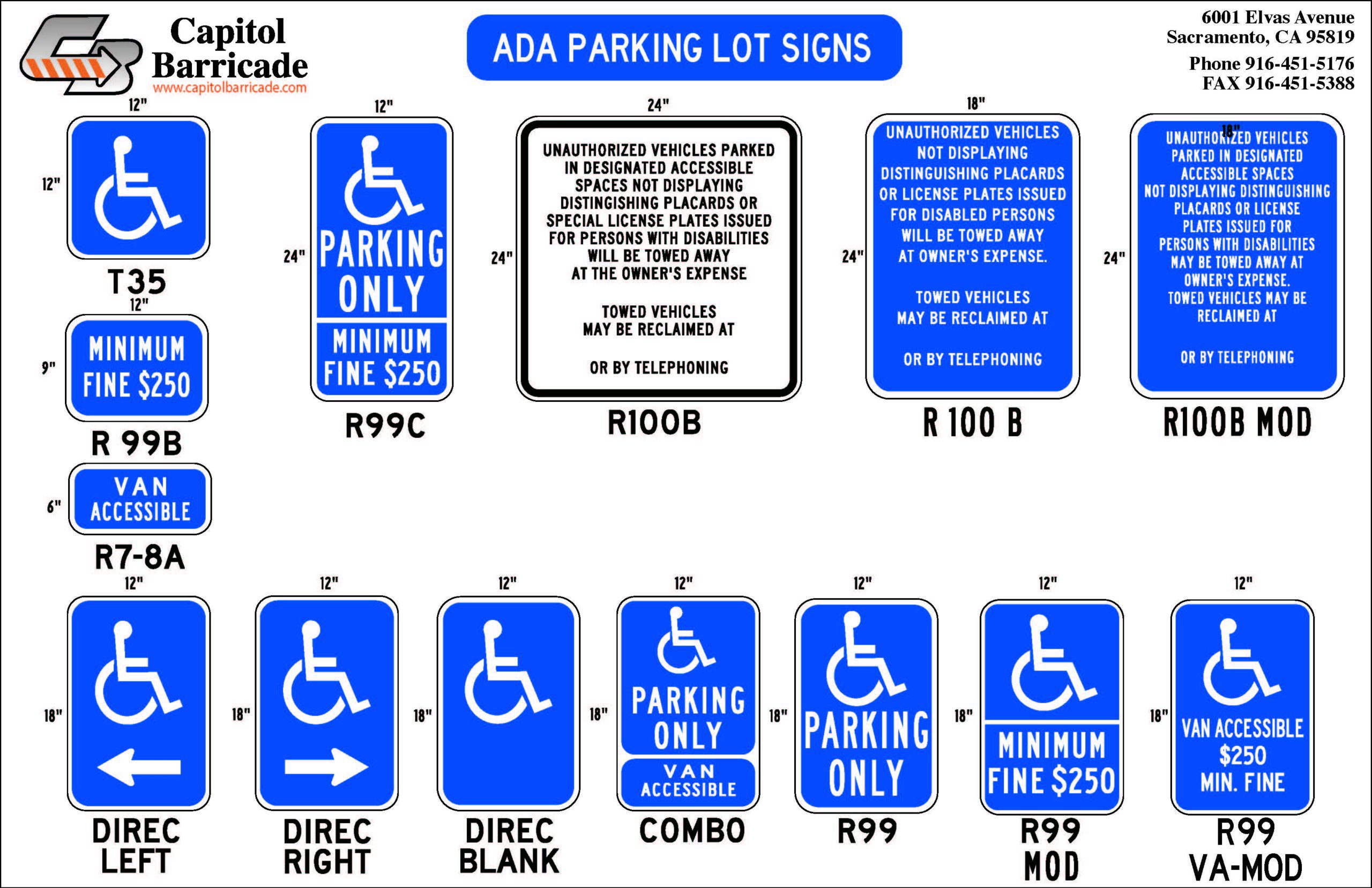The Impact of ADA Signs on Area Availability
The Impact of ADA Signs on Area Availability
Blog Article
ADA Signage: Ensuring Access and Compliance in Public Spaces
ADA signs plays an important duty in ensuring ease of access and conformity within public spaces, substantially adding to an inclusive setting for individuals with disabilities. As we discover the nuances of ADA signage, from tactile features to make complexities, it's essential to consider just how these components coalesce to support the legal rights of all individuals.
Importance of ADA Signs
In contemporary society, the significance of ADA signage expands past plain compliance with lawful requireds to personify a dedication to inclusivity and accessibility for all people. These indications are important in developing atmospheres where individuals with specials needs can navigate public spaces with the same ease and freedom as those without handicaps. By supplying clear and standardized information, ADA signage makes sure that everyone can access centers, solutions, and information without barriers.
The significance of ADA signage hinges on its capacity to improve the lifestyle for individuals with impairments by advertising equivalent gain access to. It removes the challenges that could otherwise impede their ability to take part fully in community life. Additionally, these signs act as noticeable signs of a company's commitment to diversity and equality, reflecting wider social values that champion the rights and self-respect of all people.
Furthermore, ADA signs plays an essential function in public safety and security. By assisting individuals to exits, toilets, and various other necessary facilities, it guarantees that all people, regardless of physical capacity, can leave securely throughout emergency situations. In summary, ADA signage is not simply a governing requirement however a powerful tool for fostering a equitable and inclusive culture.
Key Components of Compliance

Placement is vital; indications should be installed in areas that are conveniently visible and reachable. Usually, signs should be mounted in between 48 and 60 inches from the ground to make sure ease of access for both standing and mobility device individuals. Tactile components, such as Braille, are necessary for individuals with visual problems, giving important information in a non-visual layout.
High-contrast colors between the text and background are needed to improve readability for individuals with low vision. The ADA mandates certain contrast ratios to ensure clarity. Furthermore, character size is an essential consideration, with minimal elevation demands determined by the checking out distance to make certain readability from different angles.
Design Considerations for Accessibility
Designing accessible signs requires a meticulous method to guarantee it meets the needs of all users, specifically those with specials needs. This involves taking into consideration different layout elements that boost readability and usability. Key elements consist of the option of font style, shade comparison, and tactile attributes. Font styles ought to be sans-serif, with clear and straightforward letterforms, to help with easy analysis. The dimension of the message is just as crucial, with ADA guidelines advising a minimal elevation based upon viewing distance to guarantee readability.
Contrasting colors between message and history are important for exposure, specifically for people with visual impairments. A high comparison proportion helps distinguish the text from its history, enhancing readability under different lighting conditions. Furthermore, responsive aspects, such as Braille and elevated characters, are vital for people who are blind or have reduced vision. These components should be found at a regular elevation and position to guarantee very easy access and understanding.
Additionally, the placement of signs plays a considerable function in accessibility. Indicators need to be mounted in places that are unblocked and quickly obtainable. Making certain that signs is installed at ideal heights and angles allows all users, consisting of those using mobility devices, to communicate with them properly.
Typical Blunders to Avoid

One more widespread error is the inaccurate positioning of signage. ADA standards specify exact elevation and area needs to ensure that indications are quickly noticeable and reachable by all individuals, including those making use of wheelchairs. Neglecting these guidelines not only hampers access but also takes the chance of non-compliance with lawful requirements.
Furthermore, not enough contrast between text and background is a constant oversight. Ample comparison is essential for readability, specifically for people with low vision. Designers occasionally pick shades that are visually appealing but lack the essential contrast, rendering the message tough to discern.
Last but not least, some designers stop working to integrate tactile elements, such as Braille, which are critical for people that are blind. Omitting these features not only causes non-compliance with ADA guidelines yet also restricts accessibility for a section of the population that depends on tactile info.
Future Trends in Signs
Developments in technology and boosting awareness of inclusivity are forming the future trends in signage style. As society ends up being much more conscious of diverse needs, the integration of clever technologies right into signage is obtaining traction. Digital signage, for example, is progressing to include real-time updates and interactive functions, which can be vital in supplying vibrant details in public spaces. These indicators typically include touch screens or gesture-based check my blog controls, allowing individuals to navigate content tailored to their certain needs.
One more emerging trend is the application of enhanced fact (AR) to improve user experience. AR-enabled signs can overlay digital info onto the physical environment, giving aesthetically impaired individuals with auditory or haptic responses. ADA Signs. This technology not just enhances availability but also creates an engaging experience for all individuals
Sustainability is additionally a considerable factor influencing signage trends. Green materials and energy-efficient lighting options are being prioritized to align with worldwide ecological goals. Moreover, innovations in products science are resulting in the growth of more weather-resistant and durable indications.
Final Thought
ADA signs plays a crucial role in guaranteeing availability and compliance within public areas by including tactile components, high-contrast shades, and calculated positioning. The adherence to ADA criteria not just assists in secure navigating for people with disabilities however also signifies a company's dedication to variety and inclusivity. By preventing typical errors and embracing future patterns, public spaces can continue to progress these values, making sure that the rights and self-respect of all individuals are appreciated and maintained.
ADA signage plays an indispensable function in assuring ease of access and compliance within public areas, substantially contributing to an inclusive environment for individuals with handicaps. As we check out the subtleties of ADA signs, from responsive features to develop details, it's essential to take into consideration how these aspects integrate to promote the legal rights of all individuals.In modern-day culture, the relevance of ADA signage extends past mere compliance with lawful requireds to embody a dedication to inclusivity and accessibility for all people. By offering clear and standardized information, ADA signage ensures that every person Visit This Link can access facilities, solutions, and details without obstacles.
ADA signage plays a vital function in ensuring availability and conformity within public areas by integrating tactile components, high-contrast colors, and strategic positioning. (ADA Signs)
Report this page